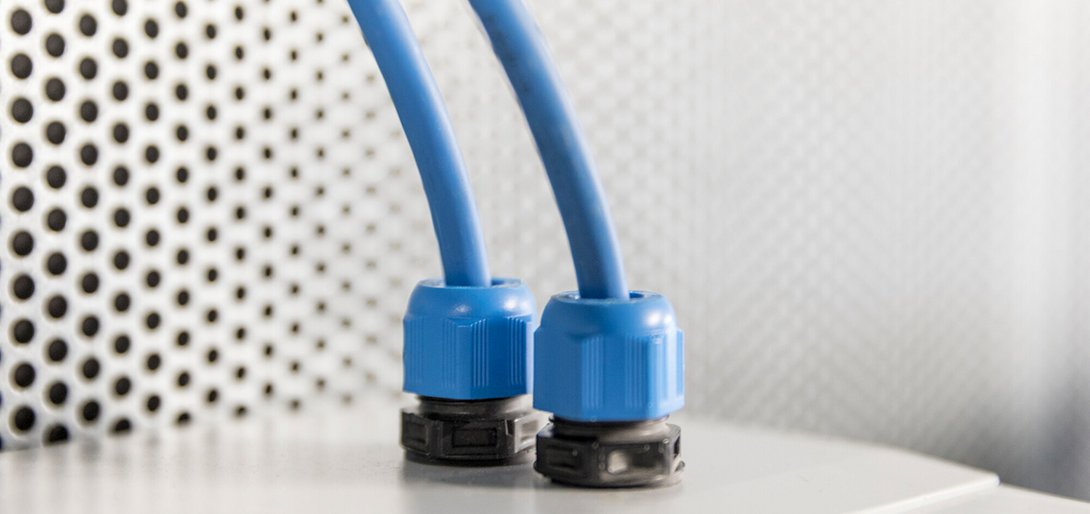Safety first!
Did you know? Flapping of a butterfly's wings produces significantly more energy than the minimum ignition energy that can trigger an explosion in an atmosphere enriched with hydrogen. To be more precise, an ignition energy of just a few microjoules can trigger an explosion and cause enormous damage.This spectacularly demonstrates the enormous importance of effective explosion protection in laboratories.
ATEX directives regulate explosion protection
After all, employees’ health and safety in the laboratory environment is a top priority. To ensure this, certain legal requirements must be observed. The two ATEX directives of the European Union are of key importance here. ATEX stands for ATmosphères EXplosives. It regulates details concerning explosion protection in the product directive 2014/34/EU and the operational guideline 1999/92/EC. (More info on the guidelines in the info box)
Waldner is considered a pioneer in the technical implementation of these strict regulations. Therefore, the company always puts high safety requirements at the centre when developing innovative laboratory technologies. For example, Waldner offers explosion-proof fume hoods and other equipment for laboratories with a special certification. With its specialist department for explosion protection and many years of relevant experience, the supplier has expertise in this field that sets it apart from its competition.
A touch panel of a special kind
Waldner's latest initiative to ensure maximum explosion protection in lab environments is an innovative touch panel. It is used directly on the fume hoods to optimise their control and operation with a wide range of practical functions. "Our touch panel represents a departure from the large, difficult-to-operate industrial mechanical switches common in traditional labs. Instead, we have created a completely digitised input field," explains Maic Manz, Explosion Protection Manager at Waldner. The panel transparently visualises all fume hood functions and provides key information, such as room temperature or flow rate of the extracted air. The individual functions can be controlled and operated easily and conveniently with the touch of a finger. The new touch panel will initially be available in explosion-proof areas and, in the future, in conventional fume hoods.
Comprehensive know-how in explosion protection
In addition to the new touch panel, the experts at Waldner are adding another technological expertise to the explosion protection area. Our laboratory fume hoods are fully anti-static, eliminating the most common ignition sources – electrostatic charges. In addition, all electrical components, such as sockets, are encapsulated throughout, safely shielding them and eliminating sparks. The explosion protection measures reliably prevent explosive atmospheres from igniting in laboratories. Employees thus benefit from maximum safety.
High level of quality ensures maximum safety
To consistently comply with the specifications of the ATEX directives, Waldner has developed a sophisticated quality management system in cooperation with the German Technical Inspection Authority TÜV Süd. Thus, all those involved in the process have specific training as "qualified electricians with specialist knowledge in explosion protection". The employees’ know-how is regularly refreshed through annual training courses, which ensures a high level of quality and, thus, maximum safety in all aspects of explosion protection. The Waldner team also offers its customers competent service for all explosion-proof laboratory equipment. It covers assembly, maintenance, and repair throughout the life cycle, from project planning to production in the factory and on-site assembly.
Conclusion
The following applies, especially in laboratories: The safety and health of employees have absolute priority. Therefore, explosion-proof fume hoods, in particular, must be given priority. They prevent dangerous ignition sources in explosive atmospheres, and the butterfly will beat its wings where it feels most at home, which is in nature.
All you need to know about the ATEX directives and IECEx-Systems
Good to know: Within the framework of ATEX (ATmosphères EXplosives) directives, hazardous areas are divided into different zones with regard to potential explosions. Zone 1, by definition, is where, during normal operation, an explosive atmosphere may occasionally form as a mixture of air and combustible gases, vapours, or mist. Zone 2, on the other hand, is an area in which the explosive atmosphere usually does not occur or occurs only for a short time. As with gases and vapours, ATEX also specifies zones for dust. Accordingly, an explosive atmosphere may occasionally form in zone 21 due to a cloud of combustible dust in the air. Zone 22, on the other hand, is an area in which the explosive dust cloud usually does not occur or occurs only for a short time. There is also zone 0 for gases and zone 20 for dust in which an explosive atmosphere is present continuously, for long periods, or frequently. Thanks to its many years of experience, Waldner has distinct expertise in explosion protection in zones 1/21 and 2/22 of laboratories. The ATEX directive is mainly used within the European Union and is adopted in the respective legislation of the member states in case of application. This directive regulates details around explosion protection in the Product Directive 2014/34/EU and the Operational Directive 1999/92/EC.
IECEx system, in turn, is based entirely on standards and regulates international explosion protection outside Europe. IECEx stands for International Electrotechnical Commission System for Certification to Standards Relating to Equipment for Use in Explosive Atmospheres and is an international certification system for Ex equipment based on the international standards of the International Electrotechnical Commission.
